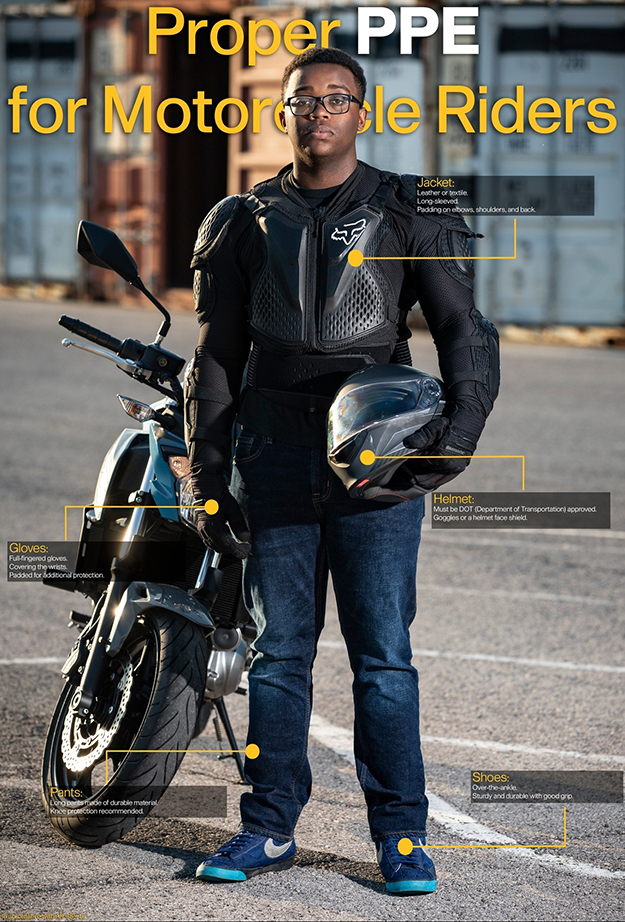As the summer season is in full swing and more soldiers consider riding motorcycles, the U.S. Army emphasizes the importance of motorcycle safety through comprehensive training programs and strict adherence to safety regulations. In recognition of June being National Safety Month, this article highlights the critical safety measures for soldiers who ride motorcycles. Louis Olive, safety director assigned to U.S. Army V Corps, underscores the significance of these programs and the crucial role of leadership in ensuring soldiers are properly trained.
The Army's motorcycle training program, aligned with Army Regulation 385-10 The Army Safety & Occupational Health Program and Department of Defense Instruction 6055.01 DoD Safety & Occupational Health (SOH) Program, includes a Basic Rider Course and an Advanced Rider Course tailored to different types of motorcycles, such as sport bikes and cruisers.
"The Army has a motorcycle training program... you have to go online, and you've got the Basic Rider Course and the Advanced Rider Course... both are required for a soldier to be certified to operate a motorcycle," explains Olive.
Sean O'Neal, the lead instructor of the Motorcycle Safety Foundation course, highlights the practical aspects of the training courses.
"We cover clutch throttle control, braking, slow speed turning... overall control of the motorcycle. We also provide the motorcycles, helmets, and gloves for the training," says O'Neal.
Apart from enhancing safety, completing the Basic and Advanced Rider Courses can also lead to financial benefits. Many insurance companies offer discounts to riders who have completed these courses.
"A lot of insurances will also give you a discount for taking the Basic Riders Course and the Advanced Riders Course," notes Olive.
Safety gear is paramount for motorcycle riders, and the Army mandates the use of Department of Transportation-approved helmets, long sleeve shirts, full-fingered gloves, long pants, and over-the-ankle boots. According to AR 385-10, these regulations are in place to ensure maximum protection for soldiers.
"I have caught a rock right in my glasses... if I had not been wearing them, I might not even be alive today," shares Olive, underscoring the importance of protective eyewear.
Capt. Joseph Schoenbeck, traffic management crash investigator assigned to Fort Knox Police Department, emphasizes the need for proper protective equipment. "For helmets, at a minimum, standards are DOT certified, Snell certified... you need full-finger gloves, preferably gloves to cover your wrist itself," advises Schoenbeck.
Garvin Purtteman, the Fort Knox Safety Director, provides additional insight into the importance of safety gear. "Safety gear is essential for every rider. Helmets, gloves, jackets, and boots are not just recommendations; they are lifesavers," emphasizes Purtteman.
Leadership plays a crucial role in ensuring that soldiers receive the necessary training and guidance. Olive believes that the responsibility of promoting motorcycle safety lies with platoon sergeants, squad leaders, first sergeants, and company commanders. "That's where the rubber meets the road. That's where that counseling needs to happen... have you been to the Basic Rider Course? Do you have a license for that motorcycle?" stresses Olive.
This proactive approach helps prevent accidents by ensuring that soldiers are well-prepared and properly equipped to handle their motorcycles. "When I ride, I make sure I'm not in a rush. It's crucial to take your time and not hurry on a motorcycle," adds Olive.
In an interesting anecdote, Larry Strickland, safety and occupational health manager for V Corps and a retired U.S. Army Special Forces trauma nurse who had his fair share of severe injuries during his 26 years of service, shared a powerful visual message about the importance of helmets.
While showing a video in Portuguese, he reassured, "It's in Portuguese but you will understand." The video featured a man in a lab coat demonstrating the effectiveness of helmets by crushing a human skull with a mallet and then hitting a motorcycle helmet, which remained virtually undamaged. This simple yet profound demonstration highlighted that safety is universal, transcending language barriers. Strickland found the ad amusing but poignant, reinforcing the critical message that protective gear saves lives.
Motorcycle safety is a shared responsibility that requires proper training, essential safety gear, and active involvement from leadership. By following these guidelines, soldiers can experience the joy of riding while staying safe and protected.
The online registration portal for the Army Traffic Safety Training Program can be found at the following URL: https://airs.safety.army.mil/usg_disclaimer.aspx.





Read Comments